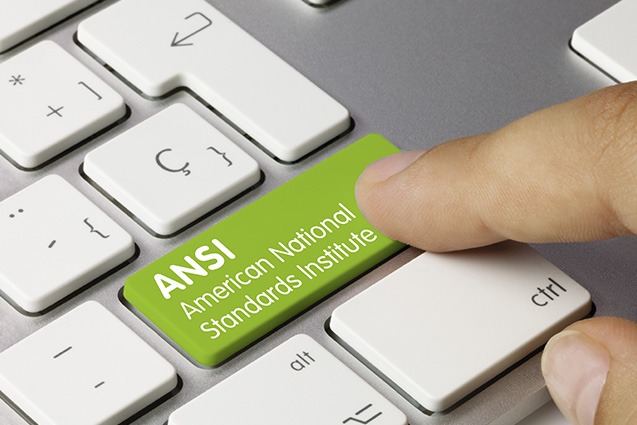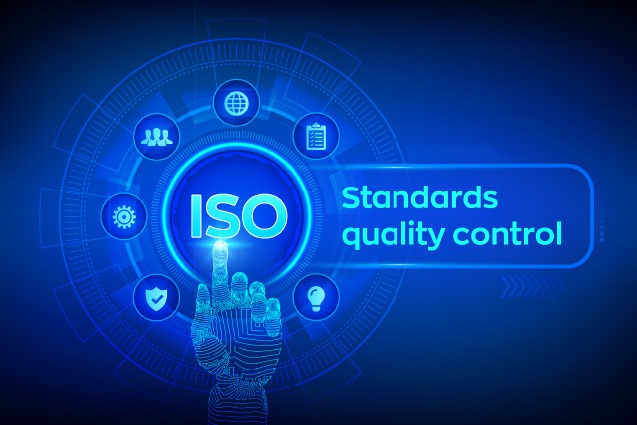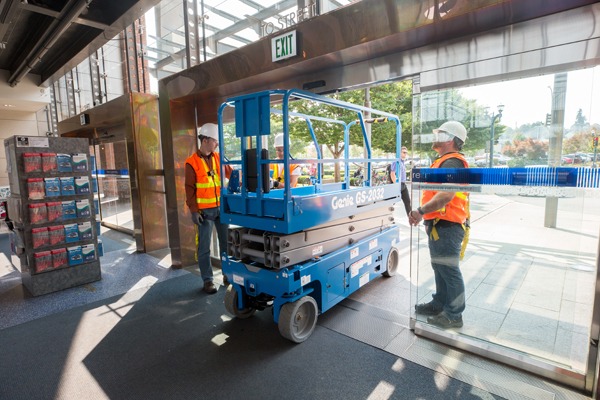
How To Keep Material Handling Processes Safe During COVID-19
As various industries re-open during the COVID-19 pandemic, business leaders will have to make some critical decisions about how to operate in an ongoing COVID-19 setting. While the temptation might be to get things back to as normal as possible in order to recoup lost revenues, this approach might actually lead to further losses. Medical experts have warned us that COVID-19 may be with us for a long time. This means that in the absence of an effective vaccine, the virus will have the potential to interrupt your material handling operations again. With this in mind, it becomes critical for organizations to implement safe material handling processes that protect both employees and clients. Here are some suggestions on how to do that.
Automated Machinery and Technology
Automating some or most of your process is a great way to ensure that you keep your employees and clients safe in a COVID-19 world. This is because automation means that you need fewer people doing a particular task and this in turn lowers the risk of infection. Automation does not necessarily mean sophisticated robots but could be as simple as using more machinery in your material handling processes. For example, instead of using manual labor to move products around, you could consider investing in material handling equipment such as forklifts which can get the job done efficiently and with less human interaction.


Provide Sanitization Facilities for Workers and Forklifts
To make your workplace safer for your customers and clients, you should consider having handwashing and sanitization points installed all around the facility. This makes it easier for your staff to wash their hands and this in turn will lower the risk of infection. When an employee is taking over a piece of machinery such as a payloader from another employee, all efforts should be made to routinely clean and sanitize the control panel to minimize the risk of virus transmission. In addition to soap and water, use Environmental Protection Agency (EPA)-approved disinfectants when cleaning visibly dirty surfaces.
When it comes to sanitizing your forklifts, you should spray frequently touched areas, e.g., the steering wheel, control levers, and seats. It is recommended that you let the disinfectant sit according to manufacturer’s guidelines before wiping the forklift down. The application of disinfectants is also needed during planned maintenance and service repair. Another best practice to consider is tagging your forklifts with the time and date of sanitizing. There should be a waiting period before the forklift is placed back into production. To increase the safety of your technicians, they should wear PPE before cleaning their forklifts.
Create Awareness
During the ongoing pandemic, it might be easy for people to forget that this virus or another type of infection could suddenly reappear. Business leaders are advised to invest in training programs that reinforce best-practices among employees. This is because unless your employees understand the importance of some of these measures, they are unlikely to adhere to them.

Illness Monitoring Measures
To reduce the risk of infection, material handling facilities are advised to invest in measures that detect and isolate sick employees as quickly as possible. These include easy-to-use handheld thermometers that can detect if someone is running a fever. There are even cameras that can continuously monitor and detect individuals with high fever without causing any interruptions to the workflow. With such equipment, sick individuals can be easily identified, isolated and further tests conducted to rule out a COVID-19 infection.
Adjusted Shift Patterns
Managing how employees work can have a significant impact on halting the spread of this virus. For example, companies can consider eliminating overlapping shifts which significantly reduces employee interaction. Staggered lunch breaks can also effectively reduce contact and enforce social distance between your employees.
Maintain Social Distancing at Work
Also known as physical distancing, social distancing is the practice of staying at least six feet away from other co-workers and visitors. The virus is likely spread among people who are in close contact for a prolonged period. When a person speaks or sneezes, droplets from their mouths or noses are launched into the air and get inhaled by those not wearing a mask. Social distancing is still one of the best tools to reduce exposure to the virus and slow its spread in workplaces, especially indoors.
Wash Hands with Water and Soap Before and After Handling Materials and Equipment
Germs can spread when individuals touch contaminated objects and surfaces. It is important to avoid touching your mouth, nose, and eyes with any unwashed hands. Washing hands is one of the easiest and most effective ways to keep you and your employees safe. Follow these steps to maintain clean hands and prevent the spread of germs at your workplace:
- Wet hands with cold or warm running water.
- Turn off the tap and apply soap.
- Lather under nails, between fingers, and backs of the hands.
- Continue scrubbing hands for at least 20 seconds.
- Tap on the tap and rinse hands thoroughly.
- Dry hands with clean paper towels.
No soap and water? Don’t worry; workers can use alcohol-based hand sanitizers that contain at least 60 percent alcohol instead. It is important to note that sanitizers cannot eliminate all types of germs. In addition, sanitizers do not work well on dirty and greasy hands.
Provide and Wear Personal Protective Equipment (PPE)
COVID-19 can spread via respiratory droplets that travel into the air when someone shouts, talks, sneezes, or coughs. All employees should wear goggles, face shields, and masks as these types of PPE reduce the spray of respiratory droplets from person to person. Face masks should be worn even if the individual does not feel sick. People with COVID-19 can still spread the virus to others even if they do or do not show symptoms.


Sorry, the comment form is closed at this time.